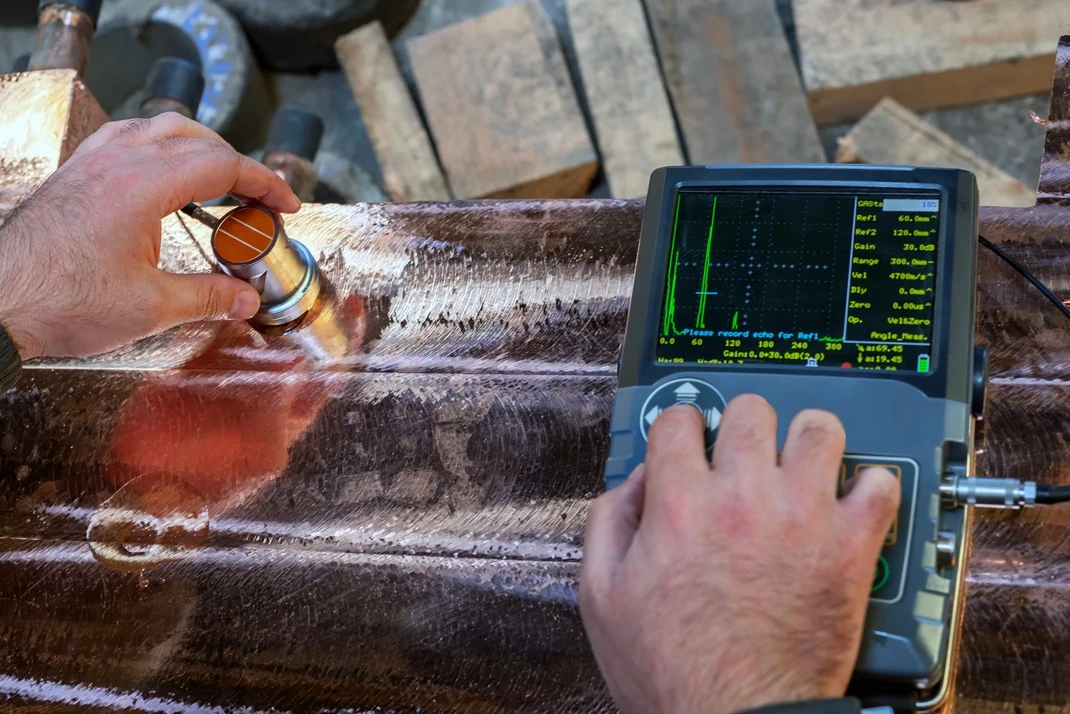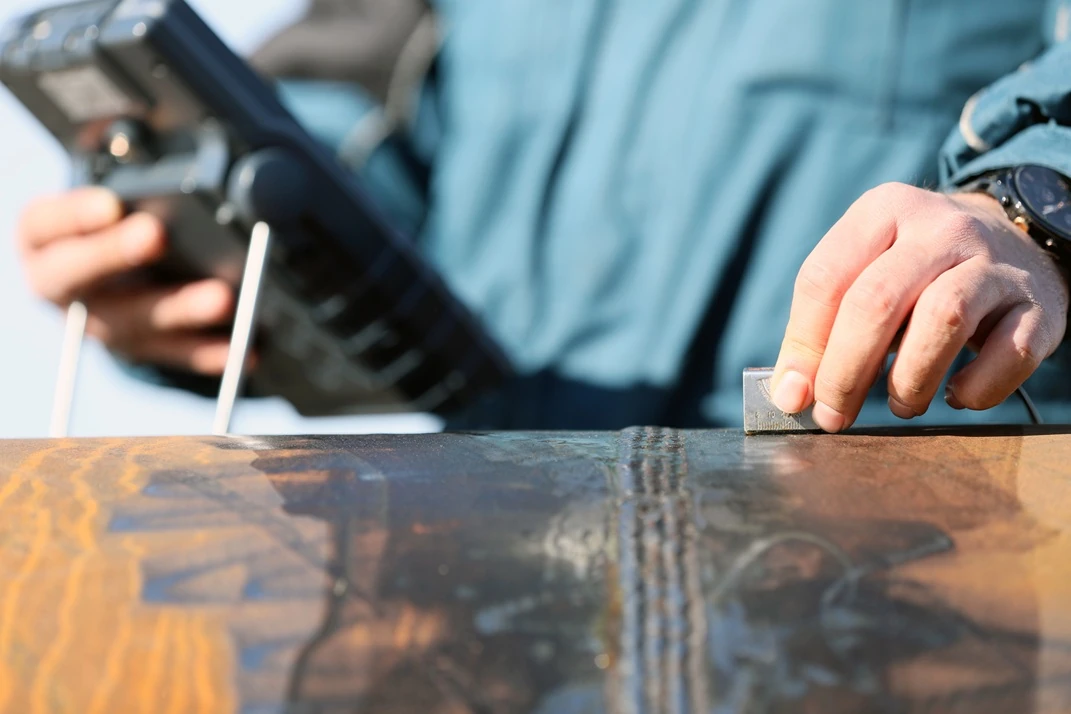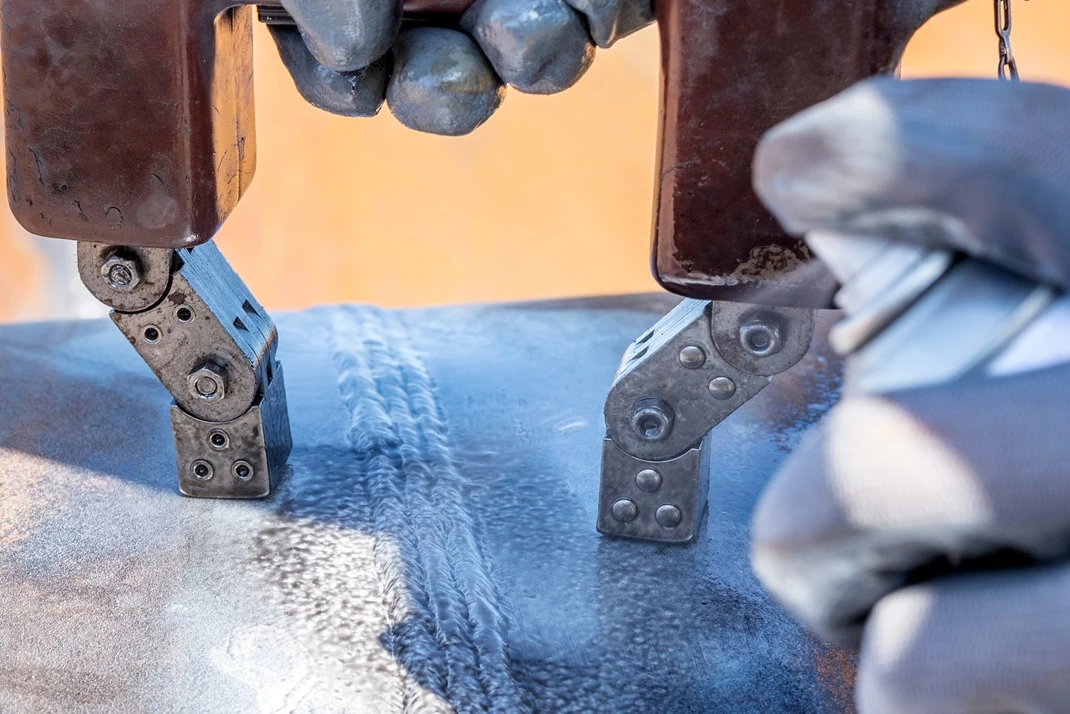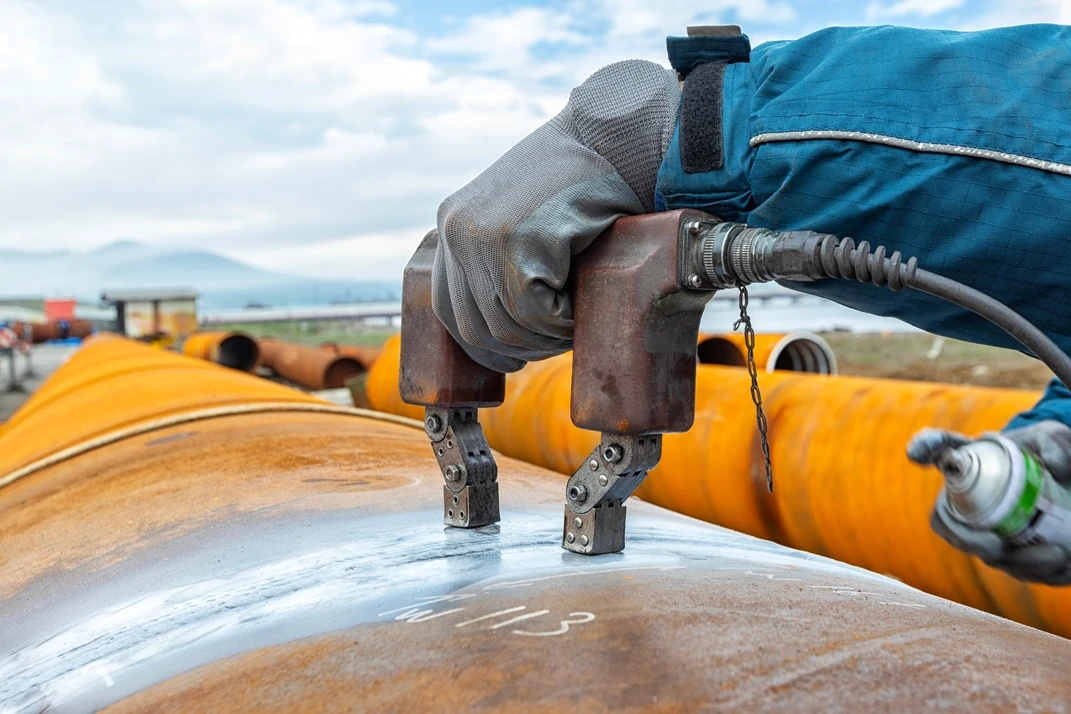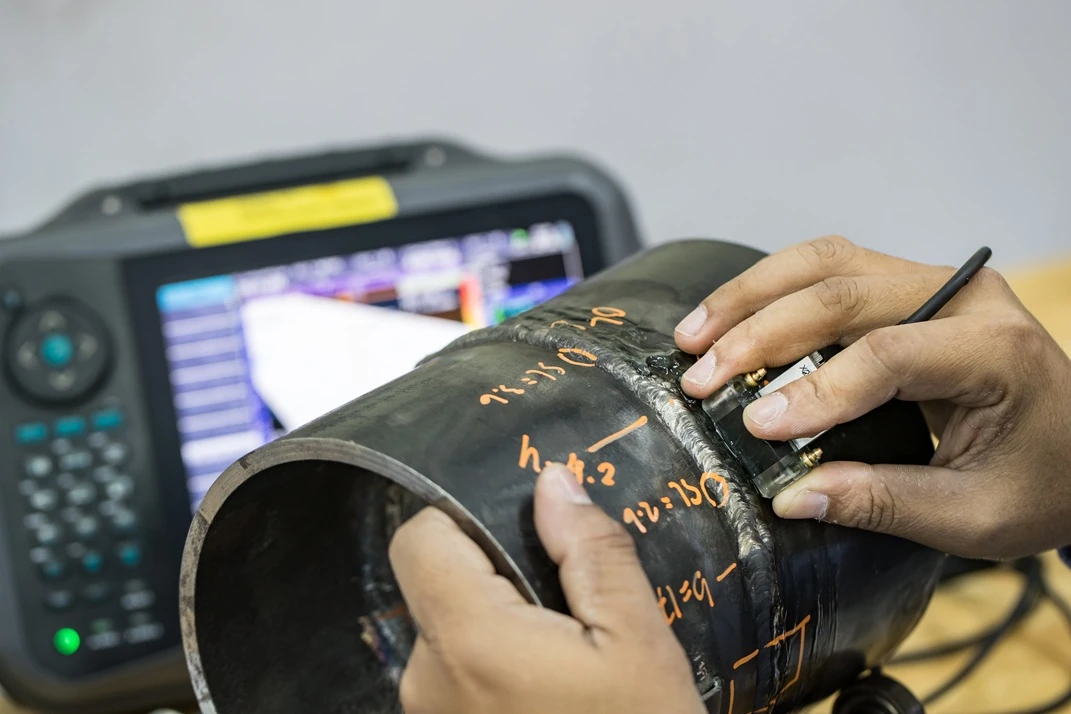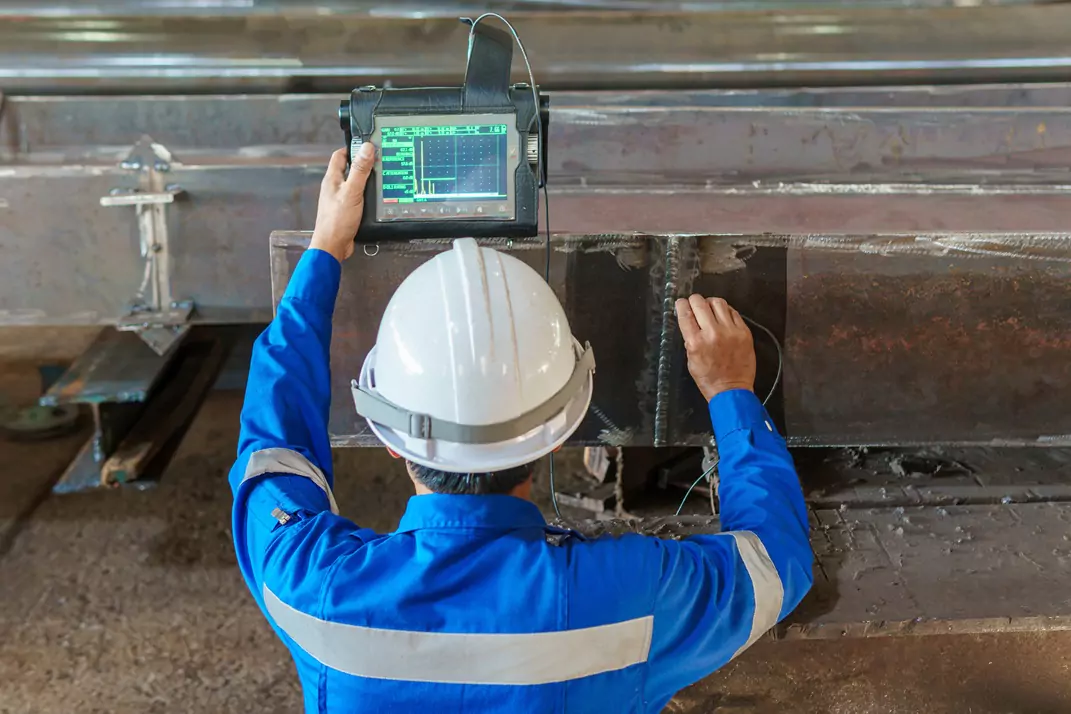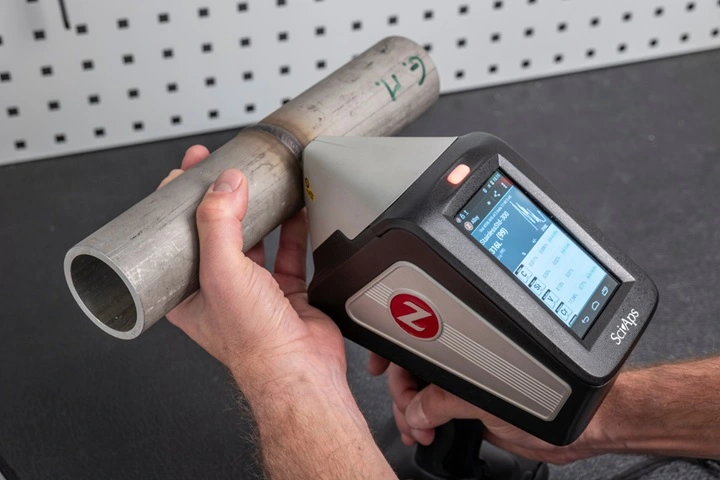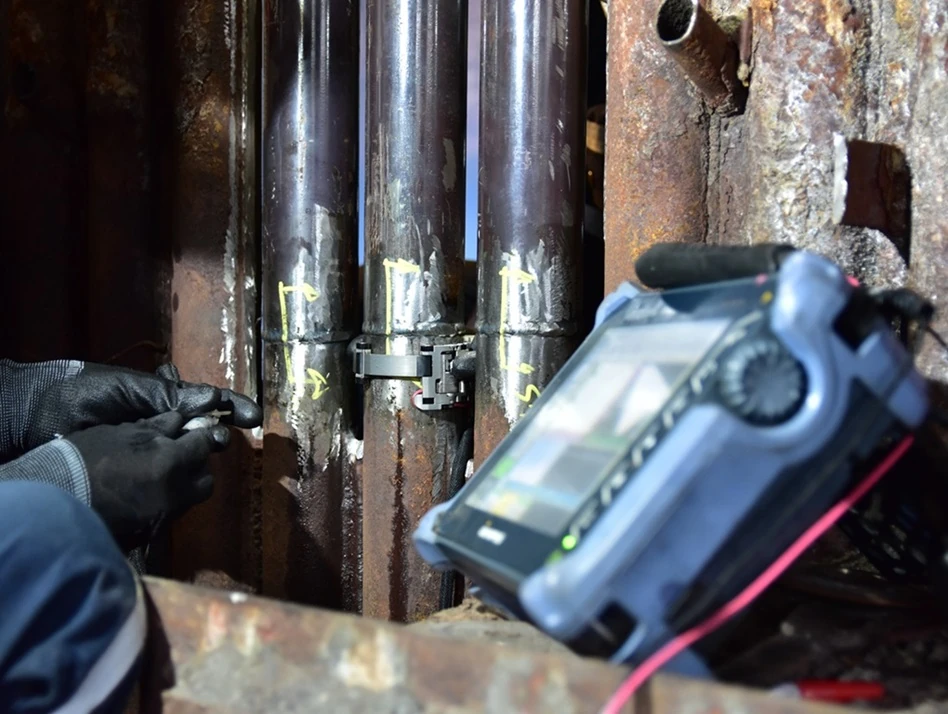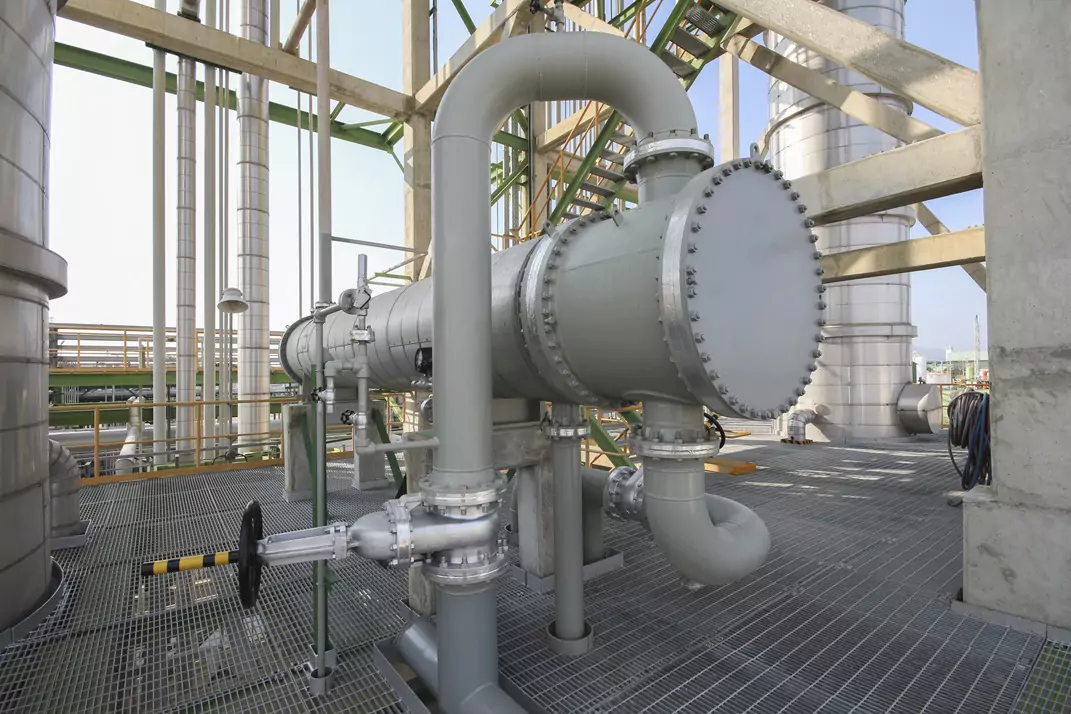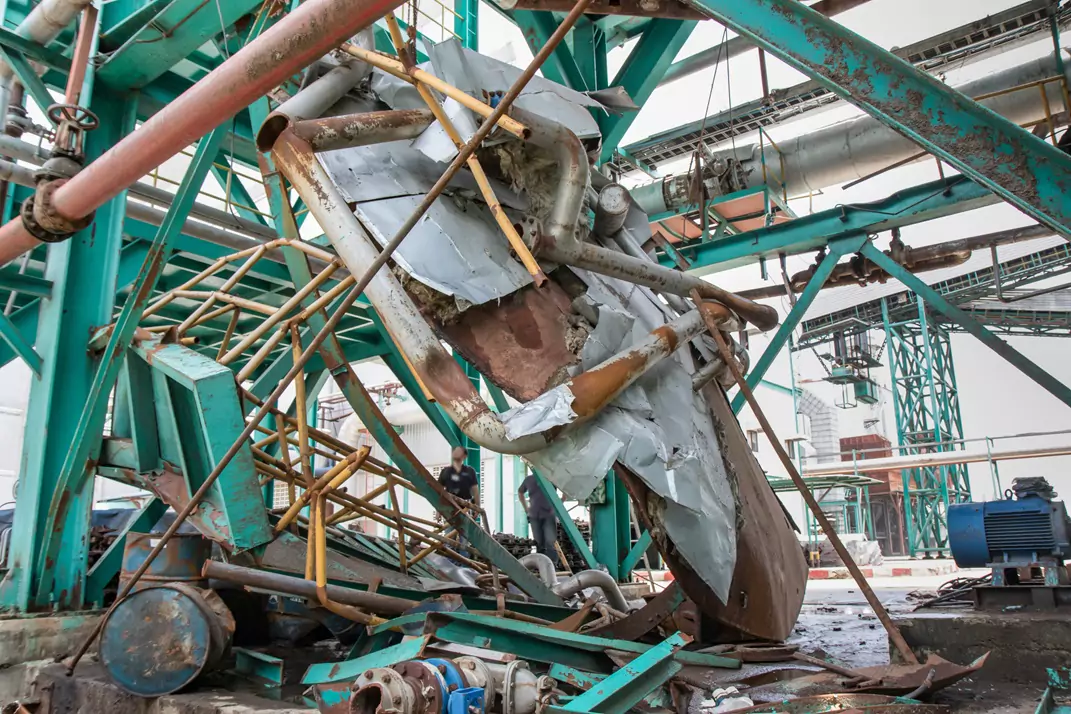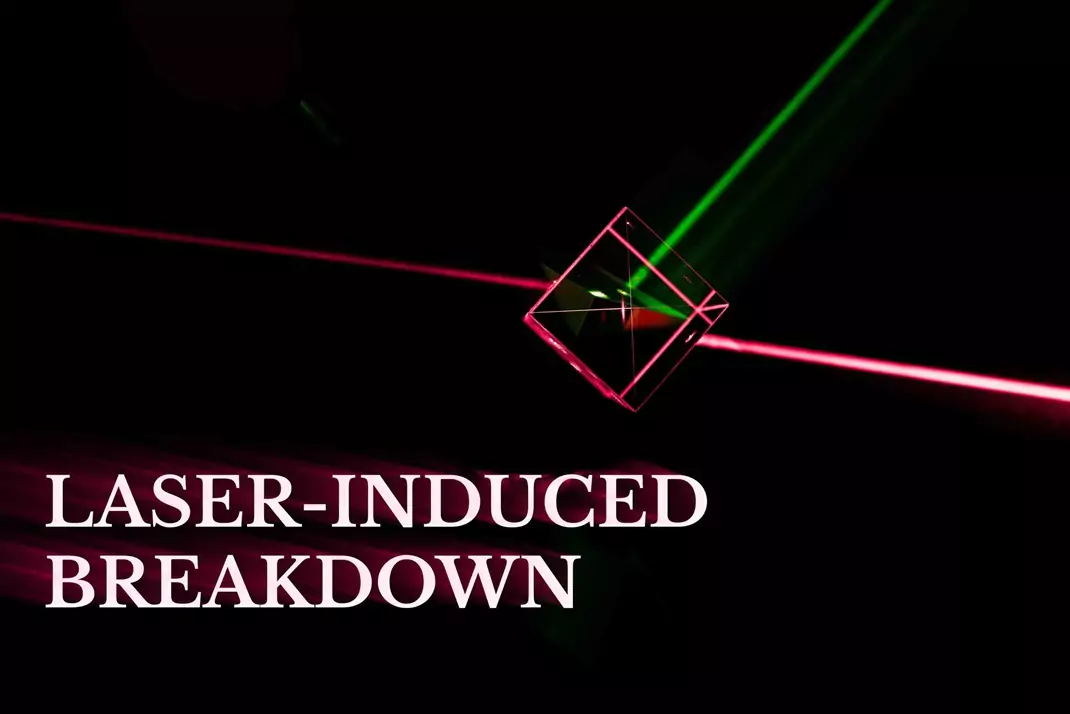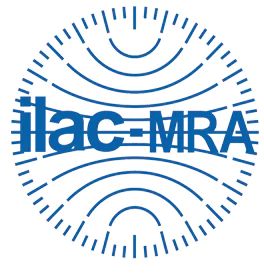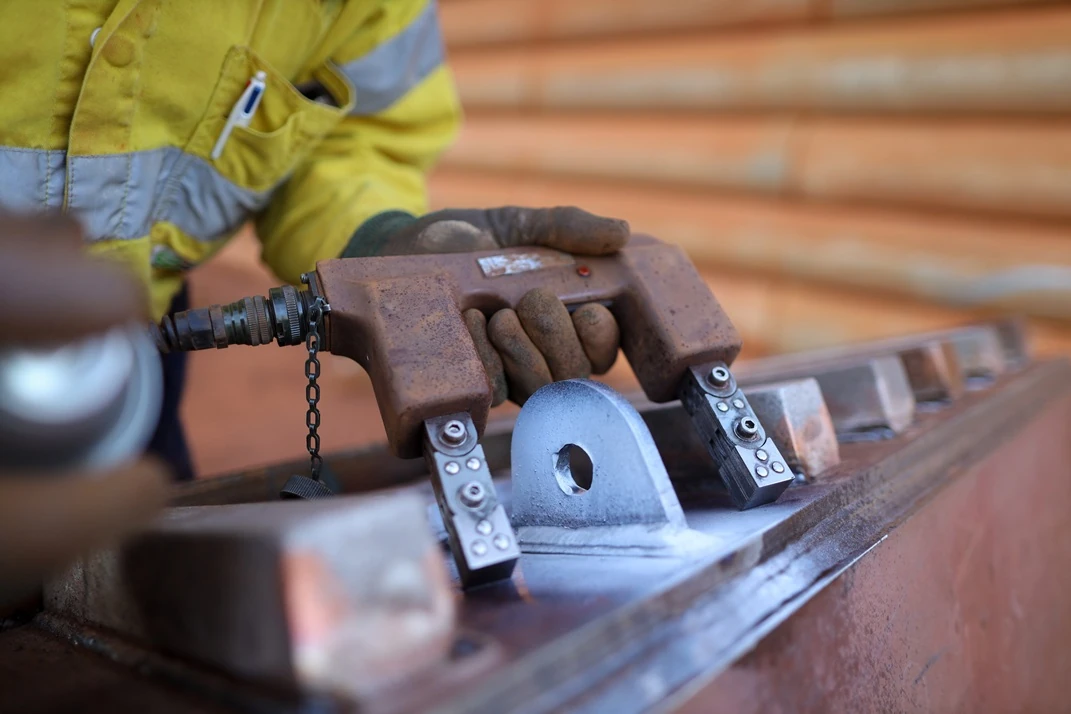
Wet and Dry Magnetic Particle Inspection Explained
Choosing the Right MPI Method for Reliable Defect Detection
About Contact UsMagnetic Particle Inspection: Comprehensive Guide to Wet and Dry Magnetic Particle Testing in Australia
Published on: 18 April 2025 | Estimated reading time: 10 minutes
What is Magnetic Particle Inspection? A Detailed Explanation of MPI
Magnetic particle inspection, often called magnetic particle testing (MPT), is a nondestructive testing method specifically used for detecting surface-breaking and near-surface flaws in ferromagnetic materials such as steel, iron, nickel, cobalt, and several alloys with magnetic properties.
Magnetic Particle Inspection Principles
- The component is magnetised to create a uniform magnetic field.
- A surface or subsurface discontinuity disrupts this field, creating a flux leakage externally.
- Finely divided ferromagnetic particles (dry or suspended in liquid) are applied to the magnetised surface.
- Particles cluster at leakage sites, visually indicating defects for inspection.
Key features of MPI include its ability to detect microscopic cracks up to approximately 6 mm below the surface, with effectiveness limited to ferromagnetic materials. It's widely used in Australian mining, metallurgy, aerospace, automotive, and construction sectors due to its simplicity, speed, and cost-effectiveness.
Applications of MPI in Australia
- Pipeline and weld inspection in oil, gas, and water industries.
- Structural steel verification for infrastructure projects.
- Mining equipment inspections for fatigue and wear.
- Aerospace component testing like landing gear and engine parts.
- Manufacturing quality control for castings, forgings, and machined goods.
Wet Magnetic Particle Testing: How It Works and Its Advantages
Wet magnetic particle testing (wet MPI) suspends magnetic particles in a liquid carrier—usually water-based or oil-based—applied to the magnetised surface to enhance defect detection.
Wet MPI Process Overview
- Magnetise the component using an electromagnetic yoke, coil, or permanent magnet.
- Prepare particle suspension with fine particles (<10 micrometres).
- Apply the suspension as a spray, bath, or flowing stream over the surface.
- Particles flow freely in liquid, clustering at defects.
- If fluorescent particles are used, UV light reveals high-contrast indications.
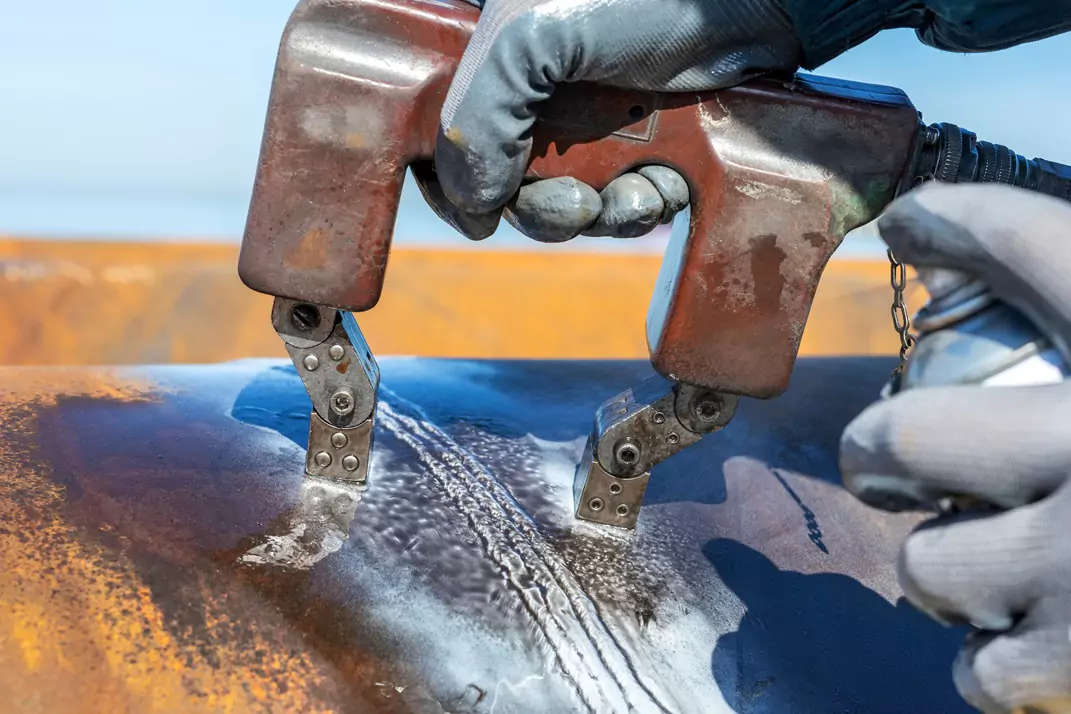
Advantages of Wet MPI
- High sensitivity enables detection of very small or tight cracks.
- Fluid suspensions allow better coverage on complex geometries.
- Fluorescent particles under UV light improve defect visibility in low light.
- Possible particle reclaiming and filtering enhance inspection consistency.
- Less abrasive, better for sensitive surfaces.
Typical Uses in Australia
- Welding inspection in controlled shop environments.
- Aerospace components needing precise defect detection.
- Pipeline construction and maintenance projects.
- Rapid microscopic defect detection.
Limitations
- Requires controlled lighting for fluorescent detection.
- Surface cleanliness critical; oils and dirt reduce effectiveness.
- Environmental regulations govern fluid and chemical disposal.
- More complex setup and higher operational costs than dry methods.
Dry Magnetic Particle Testing: Practical Field Inspection Method
Dry magnetic particle testing uses magnetic powders (generally 50-150 micrometres) applied directly to a magnetised dry surface, without fluid suspension.
Dry MPI Process Overview
- Magnetise the test piece via yokes or coils.
- Lightly dust or spray magnetic powder onto the magnetised surface.
- Gently remove excess powder without disturbing defect indications.
- Defects appear as visible clumps of powder.
Advantages of Dry MPI
- Simple application ideal for quick inspections.
- Highly portable for field and remote environments.
- Effective on rough, uneven or as-cast surfaces.
- Visible under normal daylight without need for UV lighting.
- Lower setup cost and minimal equipment requirements.
Limitations
- Lower detection sensitivity for very fine cracks.
- Particles may blow away or dislodge in windy conditions.
- Powder contaminants reduce reusability.
- Surface roughness may trap powders, obscuring defects.
Common Applications in Australia
- Maintenance in mining machinery in remote or outdoor sites.
- Heavy machinery inspections in agriculture and construction.
- Quick field inspections where fluid use is impractical.
- Fabrication shops with rough welds or castings.
Wet vs Dry Magnetic Particle Testing: Choosing the Right Method
| Wet Magnetic Particle Testing | Dry Magnetic Particle Testing |
|---|---|
| Higher sensitivity, able to detect very fine cracks | Moderate sensitivity, better for larger defects |
| Best for smooth, clean surfaces | Excels on rough, uneven, or as-cast surfaces |
| Requires controlled or indoor environments | Suited for field or outdoor use |
| Fluorescent particles visible under UV light | Colored powders visible in daylight |
| Slower, requires fluid handling and disposal | Faster application with minimal setup |
| Higher operational costs | Lower operational costs |
In Australia's diverse industrial environments, both wet and dry MPI methods have significant roles depending on the surface condition, sensitivity requirements, and environmental constraints.
Why Choose Magnetic Particle Inspection Over Other NDT Methods?
Magnetic particle inspection is often selected in Australia because of its surface sensitivity, immediacy, cost-effectiveness, and portability.
Advantages Over Ultrasonic Testing (UT) and Radiographic Testing (RT)
- Superior detection of fine surface and near-surface cracks.
- Immediate, visual defect indications without complex signal interpretation.
- Lower equipment and training costs.
- Highly portable equipment suitable for remote, confined, or outdoor areas.
- Minimal surface preparation compared to other NDT methods.
Limitations Compared to UT and RT
- Only effective on ferromagnetic materials, excluding non-magnetic alloys.
- Limited to surface and near-surface defect detection (up to ~6 mm deep).
- Reliant on surface cleanliness for effective particle mobility.
Many Australian firms include MPI within integrated NDT programs to complement volumetric methods like ultrasonic and radiographic testing.
Depth Limitations of Magnetic Particle Inspection
Magnetic particle inspection effectively detects defects up to approximately 6.35 millimetres (1/4 inch) below the surface, with most reliable detection between 1.3 to 2.5 millimetres.
Effective depth depends on factors like magnetising force, defect orientation, particle size, and ferromagnetic properties of the material.
Deeper internal flaws require ultrasonic or radiographic methods for reliable identification.
Australian Standards for Magnetic Particle Inspection
Compliance with Australian standards ensures MPI procedures meet safety and quality benchmarks.
Relevant Standards
- AS 1171-1998: Non-destructive testing - Magnetic particle testing of ferromagnetic products, components and structures. Specifies procedures, equipment, calibration, and operator qualifications.
- AS/NZS 1554.1:2014: Structural steel welding - Part 1: Welding of steel structures. Incorporates MPI inspection requirements for weld quality assurance.
Benefits of Compliance
- Guarantees consistent and repeatable inspection outcomes.
- Facilitates adherence to Australian workplace safety regulations.
- Forms part of documentation for audits and certification processes.
Practical Tips for Conducting MPI in Australia
- Thorough surface cleaning to ensure particle adhesion and mobility.
- Use suitable magnetising devices (yokes, coils, permanent magnets) for uniform fields.
- Choose fluorescent wet particles for indoor low-light or dry powders for field inspections.
- Conduct fluorescent inspections in low light or UV environments.
- Maintain clear and detailed documentation of indications and parameters.
- Ensure inspections are performed by certified, trained personnel according to AS 1171.
Summary
Magnetic particle inspection is an essential nondestructive testing method in Australia for identifying surface and near-surface defects in ferromagnetic materials. The choice between wet and dry MPI depends on inspection sensitivity, environmental conditions, and surface characteristics.
MPI is often preferred over ultrasonic and radiographic testing for quick, visual, and cost-effective surface crack detection. Limitations include detection depth and material applicability, which are addressed by complementary NDT methods.
Australian standards such as AS 1171 provide guidance to ensure high-quality MPI practices. For businesses and industries in Newcastle and across Australia, expert MPI services are available to enhance safety, compliance, and asset integrity.
For professional advice and tailored magnetic particle inspection services, contact the team at APEC Inspection, Newcastle's trusted specialists in non-destructive testing.
Frequently Asked Questions About Magnetic Particle Inspection (MPI)
1. What materials can be inspected using MPI?
+MPI is used exclusively on ferromagnetic materials such as iron, steel, nickel, cobalt, and some of their alloys. Non-ferromagnetic materials cannot be tested by MPI.
2. Is MPI a destructive testing method?
+No, MPI is a nondestructive testing method. It detects surface and near-surface defects without causing damage to the component. Only a very small region is magnetised during inspection.
3. What types of defects can MPI detect?
+MPI is effective at detecting surface cracks, laps, seams, inclusions, and other discontinuities close to the surface, typically up to 6 mm deep.
4. How does wet MPI differ from dry MPI?
+Wet MPI uses a liquid suspension of magnetic particles, often fluorescent under UV light, offering high sensitivity and better coverage. Dry MPI uses dry magnetic powders, which are simpler and more portable but less sensitive.
5. Can MPI be performed on painted or coated surfaces?
+Typically no. Surface coatings, paints, or rust must be removed to allow magnetic fields to properly penetrate and magnetic particles to adhere, ensuring accurate detection.
6. What safety precautions are required during MPI?
+Operators should follow safety guidelines including wearing gloves and eye protection when handling chemicals, ensuring adequate ventilation, and controlling electrical equipment safely.
Comprehensive NDT Solutions: The APEC Inspect Advantage
APEC Inspect offers a complete range of NDT and inspection services, each complementing the others to provide comprehensive asset integrity solutions. Our Newcastle-based team brings decades of combined experience across all major industries in New South Wales and beyond.
Why Choose APEC Inspect?
- Comprehensive Expertise: From basic visual inspection to advanced PAUT, we offer the full spectrum of NDT services.
- Australian Standards: All our work complies with relevant Australian and international standards.
- Certified Personnel: Our team maintains current certification across all inspection methods.
- Modern Equipment: We continuously invest in the latest NDT technology.
- Customer Focus: We understand that each client's needs are unique and tailor our services accordingly.
Industry Coverage
We serve multiple sectors including:
- Mining and Resources
- Manufacturing
- Hydrogen Plants
- Power Generation
- Oil and Gas
- Marine
- Construction
- Infrastructure
Contact Us
For more information about any of our services or to discuss your specific inspection needs, contact our Newcastle office. Our technical team is ready to develop a comprehensive inspection program tailored to your requirements.
Recent Posts
APEC Inspection
The APEC Inspection Team are experienced in providing a wide range NATA Accredited third-party Inspection services. We have worked on national and international projects, from offshore oil and gas drilling rigs, to underground coal mines. We pride ourselves on providing quality pressure vessel inspections and non-destructive testing (NDT).
© apecinspect.com.au. All Rights Reserved. Designed by Peritus Digital
